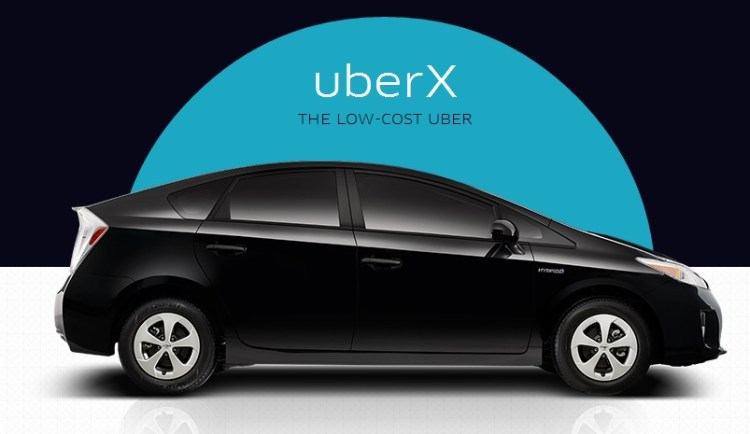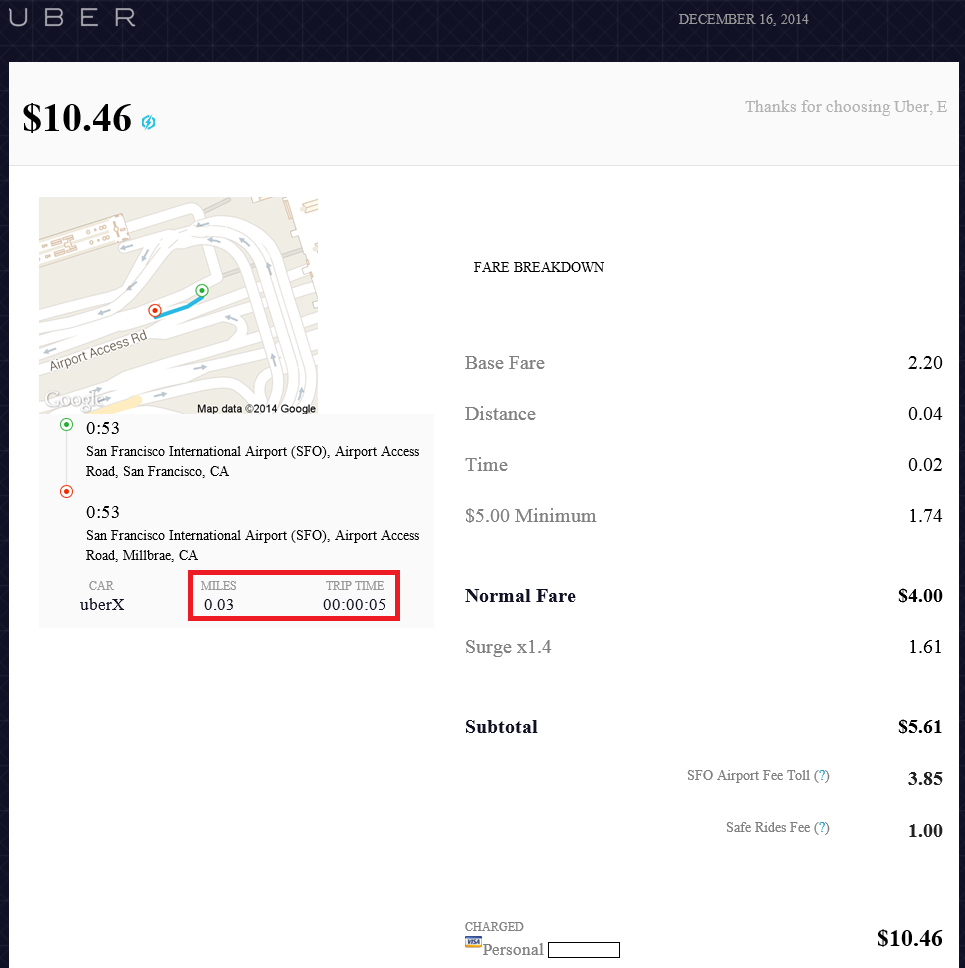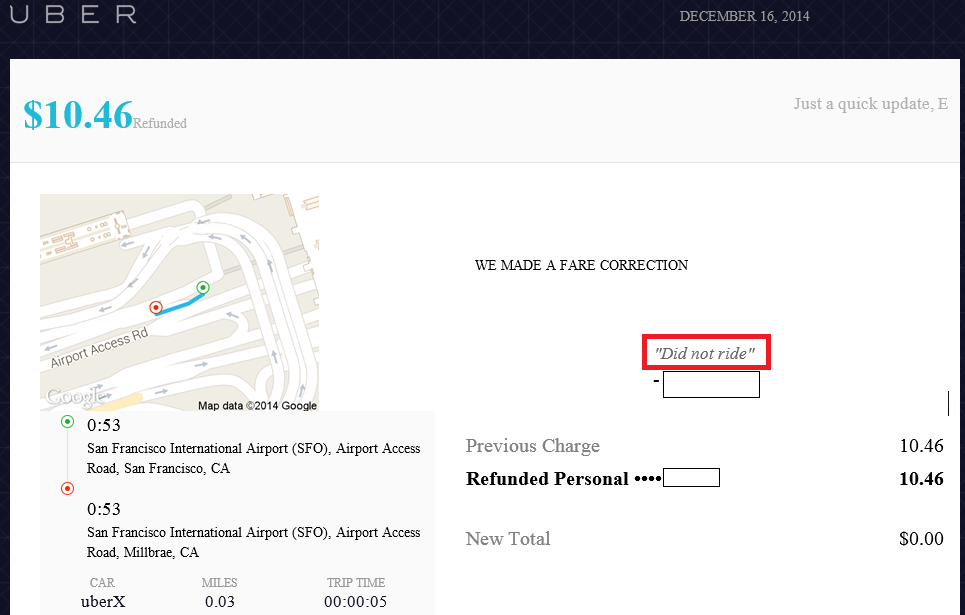I decided my trip to San Francisco last week would be a fitting time to finally give Uber a go. It wasn’t a very good first experience. After a four-hour flight delay, the last thing I wanted to deal with was getting charged for a ride I never took.
Yet that’s exactly what happened. I never got into a car, because I never saw it. Nonetheless, the driver decided to charge me anyway.
In fact, Uber was very clear about the whole thing, telling me that I “rode with [name redacted]” for a very logical 0.03 miles in 5 seconds. Apparently this was enough to trigger an automatic charge to my credit card, with absolutely no confirmation or verification from me:
Before I dive into how ridiculous this is, I want to explain a few things. Because I’m not American, I was using Uber on just Wi-Fi (in airplane mode), to avoid long-distance fees. Drivers thus couldn’t text or call me, but the next driver I requested found me just fine (and that ride went smoothly).
Having said that, it’s not clear if my driver charged me out of frustration or by accident. In my time in San Francisco, I talked to a handful of Uber drivers and customers; all of them were shocked that this was possible, though some did note that it came down to the fact that drivers start and end the ride process. At least one driver and one rider confirmed they have seen this happen before.
Finally, when I did email Uber support about this, I was told I would be refunded (I received a response 12 minutes after sending my complaint). The reason given was “did not ride”:
When I asked for more information as to why drivers can charge customers they never see in the first place, and why such short trips are not immediately dismissed, I received the following response three days later:
I understand your concern about our partner drivers, however we cannot control such issue because it’s in the driver’s end. The good thing is that you may always email us if this happens so we can help you out.
The trips that are taken regardless if it’s less than a minute or not as long as the ride pushes through it will be charged due to minimum fee, but in case the rider did not take the ride and was charged, you just have to write in for us to take a look and sort it out. This also happens when the cancellation is present.
For more information about it, just visit cancellation policy.
I understand why Uber wants to put the responsibility for starting and ending a ride solely on the driver: Customers are arguably more likely to start a ride late or end it early to pay less, and it would be a hassle to only start rides when both the driver and customer have confirmed they are in the same vehicle. In fact, if both parties had to swipe, I may not have been able to use Uber at all if getting into the car took me out of Wi-Fi range.
That said, I still believe Uber should simply disregard rides that are obviously too short. In other words, the company should have a system for double-checking the validity of charges, and length needs to be one of the factors to verify a legitimate ride.
I won’t pretend to know what the optimal threshold is. I’m sure Uber can examine all its disputed trips and take into account distance and time traveled. I doubt there are many legitimate trips that take less than a minute, and certainly not less than 10 seconds.
In addition to Uber support, we contacted Uber PR about this issue, but we did not hear back in time for publication. We also contacted Lyft and Sidecar to ask them if such charges can occur on their platforms. We will update this article if one of the companies has more to add.
VentureBeat's mission is to be a digital town square for technical decision-makers to gain knowledge about transformative enterprise technology and transact. Learn More



